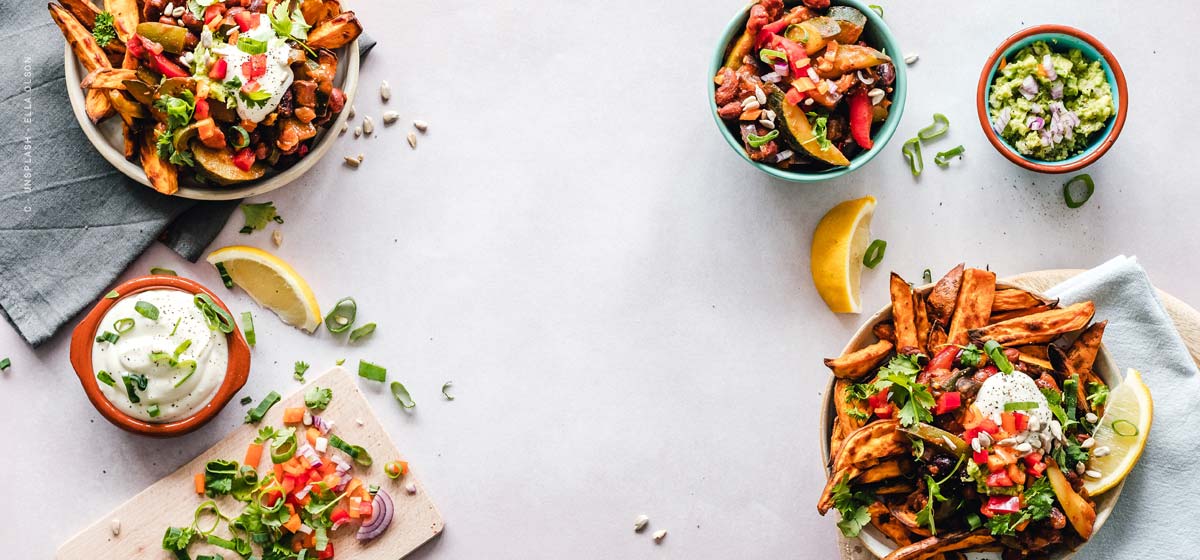Ketogenic Diet – Definition, Process, Plan & Recipes
Ketogenic diet – The ketogenic diet is based on the fact that ketone bodies are produced by this diet. It is “ketone body generating” – ketogenic. The ketogenic diet is characterized by the fact that carbohydrates are avoided. The diet is protein and energy balanced and therefore high in fat. The lack of carbohydrates causes the metabolism to change and go into “ketosis”. In the normal case, the body gains its energy from the carbohydrates we eat. Since during the ketogenic diet these carbohydrates are avoided, the body goes to the fat reserves. This can significantly reduce the amount of fat in the body. This diet was originally a form of treatment for epilepsy. It is believed that the increased proportion of ketone bodies has a positive effect on this disease.
What is ketosis?
If carbohydrates are avoided for a longer period of time, the following happens: the fats are converted in the liver to so-called ketone bodies. These ketone bodies can then be used instead of carbohydrates for energy production to keep the body running. This type of energy production is called “ketosis”. The ketogenic diet is based on this process.
Procedure of a ketogenic diet
The ketogenic diet is especially effective for losing fat. So ideal to lose the fat pads on belly, legs and buttocks. Until it comes to this fat burning, some unpleasant detoxification days must be resounded. The ketogenic diet can be used instead of therapeutic fasting. The ketogenic diet requires a complete change of diet. The proportions of energy requirements and foods that may be consumed are clearly defined. Carbohydrates are allowed to make up 5 percent of the diet. Proteins should take up 35 percent of the diet and fat a full 60 percent.
These foods are off limits during the ketogenic diet:
- Cereals: pasta, bread, potatoes
- Sugar: soft drinks, sweets
- Legumes: beans, lentils, peas
- Fruit: as fruit contains sugar it is not allowed if only in very small quantities e.g. berries
- Alcohol
- Unhealthy fats: vegetable oil
What else is actually allowed? These foods should be eaten during the ketogenic diet:
- Meat: steak, chicken, ham
- Dairy products: Cream, cheese, butter, eggs
- Fish: tuna, salmon, trout
- Nuts
- Vegetables with low carbohydrates: Tomatoes, onions, green vegetables
Experiences
Even though there is a lot to be said for the keto diet, this way of eating does not only bring advantages. Nutritionists and doctors disagree on some points. Here are the most decisive advantages and side effects of the ketogenic diet.
Advantages
The ketogenic diet brings other benefits besides fat burning. Many of the benefits of the ketogenic diet can be felt especially during the changeover, because the renunciation of carbohydrates changes the metabolism.
The benefits of the ketogenic diet are:
- Constantly low insulin levels and therefore low blood sugar fluctuations
- High fat burning
- Better fat metabolism
- Less cravings
- Improved skin texture
- Improved endurance
- Less concentration fluctuations
Disadvantages
Side effects must also be considered. The body must first adjust to the new diet. The diet should also not be understood as a permanent form of nutrition, as this can lead to over-acidification of the body.
- Fatigue and constipation due to low fiber diet
- Liver can be strained by high fat foods.
- Hyperacidity
- Deficiency symptoms
- Irregular menstrual cycles
Tips: Healthy eating and weight loss
Here you can find more articles on this topic!
Ketogenic diet consequences
The motivation for many people to start a ketogenic diet is the effective burning of fat thanks to this diet. A ketogenic diet has the effect that the body forms ketosis and thus uses the fat reserves as an energy source. Another effect that comes with the diet, as with any diet, is that it makes you more aware of what you are eating. If the ketogenic diet is done over too long a period of time, acidification of the body can be another consequence of this diet.
Criticism
Researchers have studied the ketogenic diet and found that the intestinal flora of humans changes with high fat intake after only six months. The blood fat values worsen. Inflammatory processes in the body can increase as a result. This can promote diseases such as rheumatism and diabetes.
3 day plan and recipes
To keep the uncomfortable detox phase from dragging on too long, here’s a plan and accompanying recipes for quick ketosis.
Day 1: Emptying the carbohydrate store
- Carbohydrate sources are radically eliminated
- Lunchtime: 1/3 high quality protein source e.g. salmon, 2/3 green vegetables e.g. peppers, coconut oil
- Evening: Strength training 60 minutes
Day 2: Formation of ketone bodies
- Morning: Endurance training 60 minutes
- Morning: 3 eggs, 20g butter, cucumber, coconut oil.
- Lunch / dinner: 2/3 green vegetables, 1/3 protein source e.g. steak, coconut oil
Day 3: Amplification of ketosis
- Morning: butter coffee
- 4 to 5 hours between meals
- Lunch / dinner: 2/3 green vegetables, 1/3 high quality protein source e.g. ham, 1-2 tbsp. coconut oil
Ketogenic diet book: Book recommendations
If your interest in the ketogenic diet is now piqued, you can deepen your knowledge with these books. Interesting recipes and facts about the ketogenic diet can be found here.
Intermittent fasting with the ketogenic diet
What is actually behind the term ketogenic and how does this relate to fasting? In the ketogenic diet, the body puts itself into a kind of fasting metabolism – the state of ketosis. The first part of the book dispels all the myths surrounding ketogenic fasting. In the second part, there are many creative recipes to follow. For all, for which it must go fast more often times.












